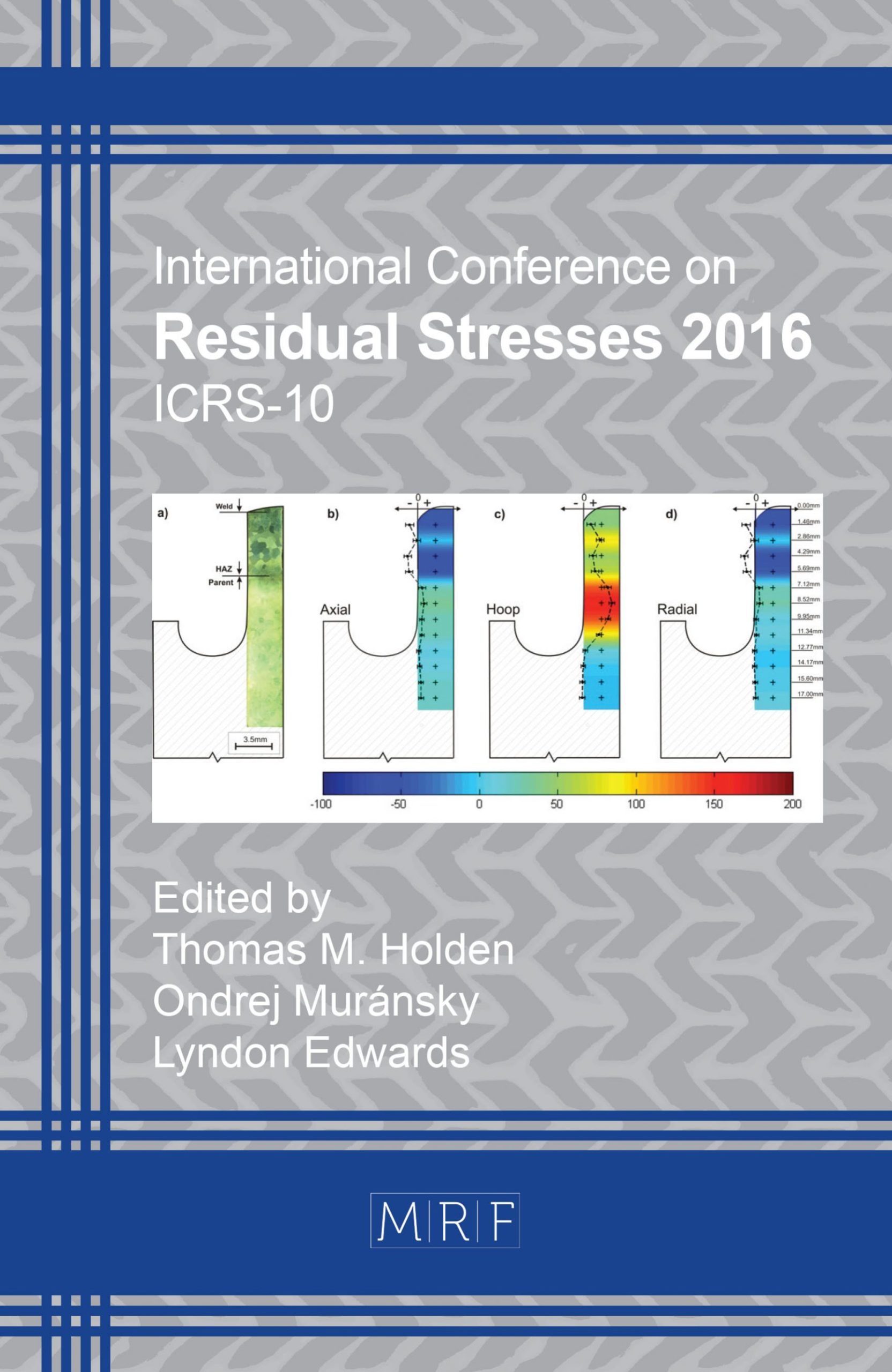The Effects of Residual Stress on Elastic-Plastic Fracture: Two Diffraction Studies
H. Coules, G. Horne, M. Peel
download PDFAbstract. Brittle fracture in structural materials is strongly influenced by the presence of residual stresses. During more ductile fractures the influence of residual stress is reduced by plastic deformation prior to the initiation of fracture. In structural integrity assessments, it is therefore important to account for the interaction between applied loads and residual stresses. This interaction was studied in two experiments. In the first, residual stresses in aluminium alloy 7075-T6 three-point bend specimens were measured prior to loading using neutron diffraction. In the second, the stress field in compact tension specimens of ferritic pressure vessel steel was mapped using energy-dispersive synchrotron X-ray diffraction as the specimens were loaded. In both cases, finite element modelling of the elastic-plastic fracture was performed using residual stresses either reconstructed from, or validated using, experimental results. This method of analysis allowed us to compare the effect of residual stress on two different fracture mechanisms. The aluminum specimens fractured in brittle manner, and analysis of experimental load-displacement results showed that residual stresses were superimposed almost linearly with externally-applied stresses at the point of fracture initiation. In the steel specimens, fracture initiated by ductile tearing and it was shown using finite element analysis that residual stress had only a very small effect on the crack-driving force at higher levels of applied load. In fact, at the point of tearing initiation prior strain-hardening caused by the indentation process used to introduce residual stresses had a greater effect on the crack-driving force than the residual stress state itself.
Keywords
Residual Stress, Fracture Mechanics, Neutron Diffraction, Synchrotron X-Ray Diffraction, Finite Element Analysis
Published online 12/22/2016, 6 pages
Copyright © 2016 by the author(s)
Published under license by Materials Research Forum LLC., Millersville PA, USA
Citation: H. Coules, G. Horne, M. Peel, ‘The Effects of Residual Stress on Elastic-Plastic Fracture: Two Diffraction Studies’, Materials Research Proceedings, Vol. 2, pp 353-358, 2017
DOI: http://dx.doi.org/10.21741/9781945291173-60
The article was published as article 60 of the book Residual Stresses 2016
![]() Content from this work may be used under the terms of the Creative Commons Attribution 3.0 licence. Any further distribution of this work must maintain attribution to the author(s) and the title of the work, journal citation and DOI.
Content from this work may be used under the terms of the Creative Commons Attribution 3.0 licence. Any further distribution of this work must maintain attribution to the author(s) and the title of the work, journal citation and DOI.
References
[1] P. J. Withers, “Residual stress and its role in failure,” Reports on Progress in Physics, vol. 70, no. 12, pp. 2211–2264, 2007. http://dx.doi.org/10.1088/0034-4885/70/12/R04
[2] R6: Assessment of the Integrity of Structures Containing Defects, Revision 4, Amendment 11. EDF Energy, Gloucester, 2015.
[3] BS 7910:2013 – Guide to methods for assessing the acceptability of flaws in metallic structures. BSi, 2013.
[4] R. A. Ainsworth, “Consideration of elastic follow-up in the treatment of combined primary and secondary stresses in fracture assessments,” Engineering Fracture Mechanics, vol. 96, pp. 558–569, 2012. http://dx.doi.org/10.1016/j.engfracmech.2012.09.009
[5] H. E. Coules, G. C. M. Horne, M. J. Peel, S. J. Oliver, D. G. A. V. Gelderen, and T. Connolley, “Direct observation of elastic and plastic strain fields during ductile tearing of a ferritic steel,” in Proceedings of the ASME 2016 Pressure Vessels & Piping Conference, 2016, no. 63345.
[6] H. E. Coules, D. J. Smith, P. J. Orrock, K. A. Venkata, and T. Pirling, “A combined experimental and modelling approach to elastic-plastic crack driving force calculation in the presence of residual stresses,” Experimental Mechanics (in press), 2016. http://dx.doi.org/10.1007/s11340-016-0171-0
[7] H. E. Coules, D. J. Smith, K. A. Venkata, and C. E. Truman, “A method for reconstruction of residual stress fields from measurements made in an incompatible region,” International Journal of Solids and Structures, vol. 51, no. 10, pp. 1980–1990, 2014. http://dx.doi.org/10.1016/j.ijsolstr.2014.02.008
[8] Y. Lei, “J Calculation for a crack in a welding residual stress field following a FE welding simulation,” in Transactions of SMiRT 23 Manchester, United Kingdom – August 10-14, 2015, 2015, p. 213.
[9] Y. Lei, “J-integral evaluation for cases involving non-proportional stressing,” Engineering Fracture Mechanics, vol. 72, no. 4, pp. 577–596, 2005. http://dx.doi.org/10.1016/j.engfracmech.2004.04.003































